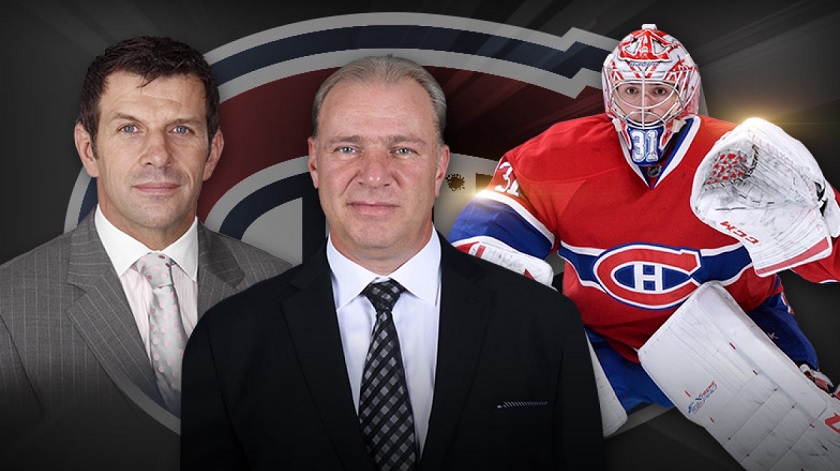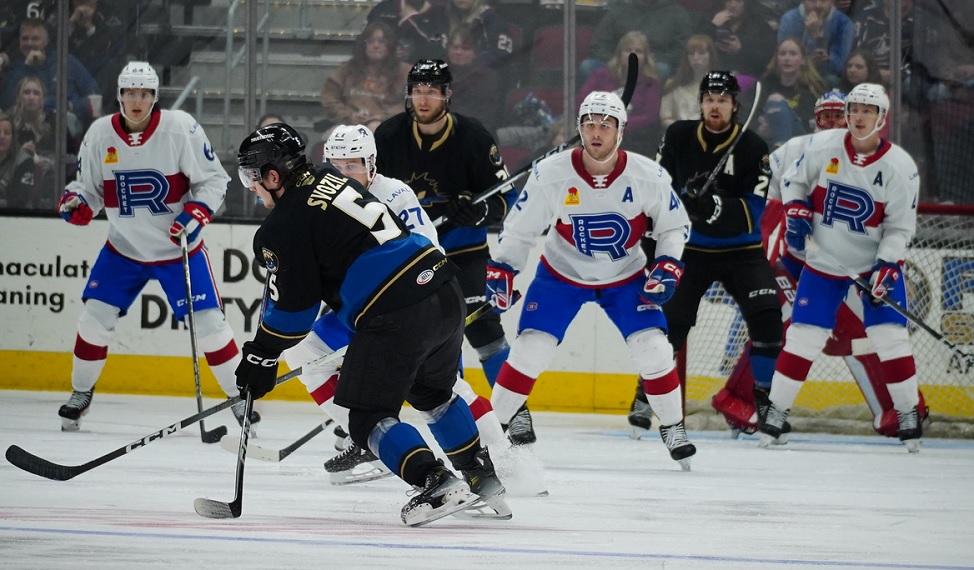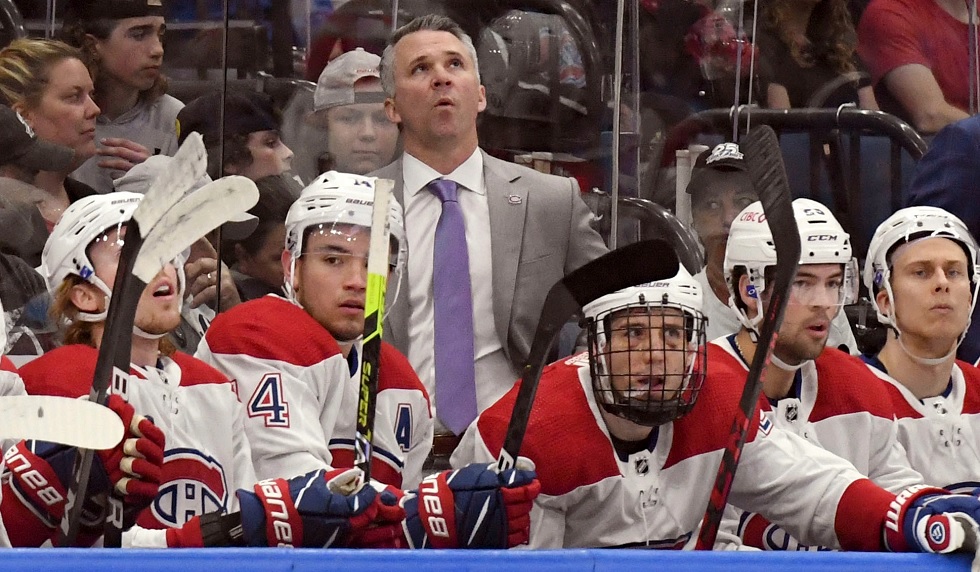HabsWorld.net --
It may not be a popular one but the Habs have a system, Da System and it is working far better than anything fans of the Montreal Canadiens have been treated to in decades.
The Illusion of Parity
A lot has been made of the parity which has emerged throughout the NHL since the dawn of the modern Salary Cap era. Combined with the overtime point and a growing awareness for the importance of structured training, nutrition and prospect development, the new NHL is a league where no team is unbeatable and the margin for error is slimmer than ever before. At the same time, analytics have been gaining mainstream popularity across NHL front offices, further magnifying the effect of parity and making the task of gaining a critical edge on opponents even harder.
As many a Habs fan will tell you, any serious discussion about the history of the NHL and the dominance of the Canadiens will often result in marginally-informed arguments about the so-called “Quebec Rule” that gave Montreal first dibs on all Quebec talent. If these arguments are to be believed (which they are not), this advantage was significant, and also the only reason that the Habs collected Stanley Cups like Air Miles for so many years, while the rest of league suffered along in a haze of French-less envy.
Many articles have already spent ample time debunking the fallacy that the Habs gained any significant advantage from that rule – in fact, the major advantage they enjoyed at that time was a superior farm and development system that allowed them to parlay their financial advantages into depth and on-ice consistency. Importantly, this was not against the rules, Montreal was simply an innovator taking advantage of an opportunity to gain a crucial edge on the competition. The Devils weren’t cheating by developing and mastering the neutral zone trap (although I will never forgive them for making boring synonymous with winning for so many years), just as the Red Wings advantage from investing in scouting and a long-term development strategy was not an “unfair” advantage.
My point is, all other teams could have done the same, and in many cases they eventually did adopt these strategies because they worked. In some cases, the league stepped in to even up a perceived imbalance. Changing the rules so that only one goal could be scored during a two-minute power play or negating front-loaded, cap-circumventing contracts are examples of this type of balancing that has happened in both the Original Six and Modern eras.
Yet, for the past decade there has been a distinctly unfair system at play in the NHL which has punished some teams and provided a completely legal advantage for others. I am referring to the Salary Cap; in particular, the fact that it is calculated on money spent by teams and not money earned by players. The point of the Salary Cap was to ensure that no team would have an advantage in signing players based on being willing to spend more than any other team. Yet players sign contracts based not on what a team is willing to spend on them (although, of course, they’re flattered), but rather on how much they will receive.
This discrepancy between spending and earning matters because there is a massive difference in the amount of tax deducted from a player’s salary depending on where they choose to ply their trade. In fact, the difference is upwards of 20% between the team whose player’s pay the lowest income tax (Edmonton) and those who pay the highest (Montreal).
Playing the Hand You’re Dealt
The fact is, teams don’t get to set the income tax rates of the areas they play in, they must simply play the hand they’ve been dealt. Why this wasn’t something considered by the armies of lawyers who crafted either of the past two CBA’s is beyond me. It’s not as though they forgot that some teams earn revenues in Canadian dollars and others in American; they simply said that the salary cap will be set in American dollars, regardless of where you happen to be located.
This issue has been raised by others before, and in some cases, well-supported arguments have been made that other factors such as team competitiveness and quality of life mitigate much of the weight players put on taxation. Yet a couple of things are not often discussed in examining the effect of taxes on player salary.
First, that changing the Salary Cap so that it reflects money players receive, rather than money they are paid, would be so easy and equitable that the NHL should have done it from the beginning. Second, that just because players are still choosing to play in markets with higher tax rates, does not mean that they are not being compensated to a higher degree than they otherwise would with a low-tax team.
Players play for money. Some may give a home-town discount or take less salary on a short-term deal to have a better chance of winning a championship at the end of their careers, but all things being equal it is harder to get a free agent – restricted or unrestricted – to sign with your club if another club is offering more money. And as long as the cap does not account for income tax, certain teams will continue to be able to do this at a rate that others will not.
For whatever reason, this is the reality of the current NHL, and I suppose if you have to live in Alberta or Florida you have probably deserve some kind of compensation. However, if self-proclaimed hockey connoisseurs want to hide behind the limp obscurity of the “Quebec Rule” to explain away a generation of unrelated Habs dominance, they should at least be forced to come face-to-face with this current injustice that has far more serious implications, especially in an age where parity is so tight that cap management has become one of the most crucial aspects of a team’s ability to compete for the Cup.
The Subtle Genius of HIRING Therrien
All of which is to say that Marc Bergevin may have had this in mind from the time he was hired to lead the Habs. Only time will tell if his master plan to build the Canadiens into a consistent contender will bear fruit, but in just over three years he has created stability, a strong cap position and a team positioned to compete with the best in the league.
So for Montreal, the team burdened with the highest tax rate in the league, what can Bergevin do to respond to this inherent disadvantage in the ability to retain and attract free agents? What strategies are available to their braintrust that can help overcome being hobbled before the race has even begun?
High draft picks?
Trading for players on long-term contracts signed in low-taxed jurisdictions?
Luck (like having your emerging best sniper be represented by a friend rather than a professional agent)?
These strategies are all possibilities; but they have their downsides and Marc Bergevin cannot assume that any of these options will always be available to him (except through purposely tanking, which is really more Toronto’s thing than Montreal’s). So what might you do if you were Montreal’s GM?
I am proposing that Bergevin is cagey enough to take a look around the league and realize that cap management is the only way to be consistently competitive at the highest level of the league. Realizing that Montreal has the greatest disadvantage (not according to self-imposed spending limits, but strictly according to the rules) in terms of signing players to contracts that give value for money, he decided to take a quick look and quickly realized that the most egregious contracts in the league were all based on offensive statistics (or potential for same). So the answer is simple: first, build a team around defense, where the contracts provide more bang for the buck, and your best asset Carey Price can be put to full use. Second, hire a coach whose system is dedicated to stifling defensive “smart” play that focuses on limiting chances and capitalizing on counter-attacks.
The Tortoise and the Hare
The result is a team that will never reward one-dimensional scorers with gaudy over-priced contracts. A team where even skilled offensive players will sacrifice 20-30 possible points per year in order to decrease the amount of goals other teams get against them. I submit that Bergevin has assembled exactly what he wanted all along. Because a team that wins 2-1 still wins and at the end of the day Patrice Bergeron is a much better player than Rick Nash or Paul Stastny, but goals = dollars.
Some have claimed that Bergevin makes moves to force Michel Therrien into playing skilled players over defensive vets. Yet, Torrey Mitchell and Brian Flynn were re-upped quickly and get paid nearly as much or more than Alexander Semin – even if he is only on a show-me deal. The fact of the matter is, Therrien is doing everything Bergevin wants; he wins, and does it without costly superstars that excite the fans by lighting the lamp, but leave a GM with no money left for crucial depth at other positions. Tampa is a lot of fun to watch (for now) and Pittsburgh won a cup before losing their depth, but Chicago and LA also have tons of offensive skill, they just don’t make it the focal point of their style or their core.
At the end of the day, it all comes down to little moves, slight tweaks in approach – being able to see the board and play the long game. The Habs have a system, Da System and it is working far better than anything Habs fans have been treated to in decades. They develop players slowly, sign depth that can be slotted within the system that exists and keep games close enough that they’re always in them. I will gladly bite my tongue about Therrien’s style, or lack thereof, than cheer for a team with some of the top goal scorers in the league, who also happen to have plenty of time to practice golf in the spring.


